BROSS TOKYO STAFF DIARY [Bross]
設営の為3月17日〜3月22日の間HOSHI、NUMANOが不在となります。
尚、営業は通常通り行っております。
お客様には大変ご迷惑をお掛け致しますが何卒よろしくお願い致します。
BROSS TOKYO STAFF DIARY [Bross]
チャンの作品テーマは文化とその産物へと密接に結びついており、例えばメディア、商業発展や資本主義、そして政治とアーティスト自身のアジア系アメリカ人という二つの文化間を乗り越えてきた個人的な経験から来ています。チャンの作品全てに及び、文化的産物の再構成が多く見られます。しかしその変形はとても微かで、細部でのみ分かる物です。全ての文面がアルファベット順に再配列された、ニューヨーク・タイムズ紙の表紙のコラージュであるアルファベット順新聞紙(Alphabetized Newspaper、2004年)は私達が日々無意識に消費する恐ろしい言語量を強調しています。北京の街頭で入手したメガホン収集品から成る音の彫刻であるブーム・プロパガンダ(Boom Propaganda、2008年)は、中国商業界での現在の状況を誇張しており、競争する広告の不協和音として表れています。
ラザフォード・チャンのザ・コンテナ(The Container)にての新しいインスタレーション 「ゲームボーイ・テトリス(Game Boy Tetris)」は、チャンのテトリス界の王座へと昇る記録である1,764本のビデオが陳列されており、反復行為へのアーティストの熱狂的な傾向と没頭性を提示しています。まだ世界的な首位ではありませんが、現在はツイン・ギャラクシーズ(Twin Galaxies)から世界第2位へと評価されており、公式な記録保持者となっています。チャンの視野は首位へ定められていると言っても過言ではなく、暫く諦めないでしょう。
この没頭は1991年に、アップル社の共同創立者スティーヴ・ウォズニアックに気が付いてから始まったと伺えます。数年経った後もウォズニアックのスコア(2013年に4位と評価された)に着目し続け、チャンはウォズニアックを超えるという目標を確信しました。ニューヨーク市チャイナ・タウンのアパートで、自分のスコア証明の為にゲームをプレイする自分のビデオ録画を始め、相当な本数を収集しました。このビデオがThe Containerにて低位から高位スコアの順番にて展示されています。
チャンのニンテンドウパワーマガジンへ宛てた手紙に、自身の没頭についてこう説明しています。「ゲームボーイ・テトリスは完全にシンプルだが、それ自体に熟練性へと没頭させる無限の宇宙感があり、その他の『ゲーム』に目移りさせない。」この手紙は当雑誌が廃刊してから3年後に書かれた物で、1991年にスティーブ・ウォズニアックがゲームボーイ・テトリス王者へと君臨した当時に、ニンテンドウパワーへ宛てた手紙の形式を真似ている。
チャンは自身の全ての挑戦を継続してストリーミング・プラットフォームのtwitch上でライヴ・ストリームとして流し、そして全ての録画ビデオの記録をgameboytetris.comにて保ち続けています。2016年1月には、この企画はニューヨーク市のリゾーム(Rhizome)とニューミュージアム(New Museum)の共同提供でのオンライン展覧会の主題になりましたが、The Containerはこの企画を仮想上では無い実際のスペースで初の展示を行い、そして更に観覧者がテトリスのプレイを出来る様にしており、チャンの高スコアへの挑戦になるかもしれません。
勿論この展覧会はとてもオタク的であり、普段ギャラリーに足を運ばない新しい観覧者も視野に入れています。しかしラザフォード・チャンの過去の作品にて、労働と雇用の相似性と、上へと昇る為には、粘り強く絶え間のない、時には無意味な努力から逃れる事は不可能だとしており、それを無効化・反復・「時間の無駄」だと没頭的な作風から感じる人々も居るでしょう。その根元は資本主義なのです。
この出版は展覧会と同じ内容で、チャンの現在までの全てのビデオ録画からの画面画像を掲載しており、1位になる目標を獲得する為のゲーム上での道のりに対するアーティストの没頭を明らかにしています。スコアは低い物から高い物へと順番に配列し、アーティストの疲れ知らずな追求ビデオと一致する並びになっています。前述した2015年11月にニンテンドウパワーに宛てたチャンの手紙も記載しています。
ラザフォード・チャンの作品を知ったのは、2008年にロンドンのホキシントン・スクウェアに位置するブラウン・ギャラリーにてビデオ作品のデッド・エアー(Dead Air、2003年)を見てからです。そのビデオは画面上に2003年のジョージ・ブッシュによるテレビ放送版の一般教書演説での途切れる間、息を呑む瞬間、そして喝采が映し出されていました。この1時間に及ぶ演説を30分に要約したビデオ・インスタレーションは、演説の途切れる間のみを捉えていました。ユーモアのある編集でありながら、編集で文脈の消去が出来る事を注意深く提示していました。それ以上に、観覧者がボディーランゲージと声音から口語されない詳細を読み取り、真実を発見する事にどう敏感になるのかも示していました。
チャンはメディアとそれが文化の通貨として一般に与える影響について長期に渡る興味を持っています。いつも繊細さ、優雅さ、そして根気強くも非妥協的な言葉とイメージの編集と綿密な観察への試みと共に、印刷、テレビジョン、そして映画への情熱が過去10年間の作品に継続して現れています。言葉とイメージ両方の再文脈化が、再形成されたイメージと一般的なニュース内容に新しい視点を与えます。言葉とイメージはチャンの作品へと強力な観念的土台を与えるだけではなく、視覚への敏感さを示す明確な美的根拠となります。色調による肖像(Portraits by Tone、2004年)の様に素晴らしい抽象イメージを新聞写真の色調からのグラデ
ーションで並べ替えたり、エピック(The Epic、2008年)でのマーカーで全ての人間の肌のみを除いて黒く塗った新聞ページを肉体部分の蓄積として、超現実的で視覚的に引き付けるイメージとした事で、コンセプチュアル・アートとビジュアル・アートの境界を曖昧にさせています。
私達はホワイト・アルバムを買う(We Buy White Albums)はチャンの最も知られた作品で、自身の収集するザ・ビートルズのホワイト・アルバムの番号付きレコードのコレクション(現在1,393枚程を所持する)であり、チャンの視覚への細部に及ぶ感覚によって、熱中し易い性格が倍に伺えるでしょう。チャンがアルバムに魅了されたのは二枚目のコピーを取得した後に、カバーは完全に白いのに独自の老化と以前の所持者による記入等によって、それぞれのカバーが違う事に気がついてから始まりました。この特別性が虜にさせる原因になり、そしてコレクションから最初の100枚のレコードジャケットを重ね合わせて、チャン自分自身のアルバムカバーを制作する源となりました。出来上がったイメージは只白く、しかし文化的な製品は私達の社会として文化制定をしていく記録として思い浮かばせます。更にチャンは選出したアルバムの音を重ねる事で深く追求して、ダダイスト作品の様な「新規で録音した」アルバムを制作しました。
アンディよ永遠に(Andy Forever、2004年)では社会性と文化性の追求が広げられ、香港で功績のある役者であるアンディ・ラウのスクリーン上の全ての死亡場面を描写しています。ラウの死亡場面は16種類の映画(勿論年代順に並べて)から構成されており、繰り返される25分のビデオがデジタルの世界での人生と栄光を論及し、映画とメディアを消費する中ですぐに増大する不信感の停止を強調させます。
確かに、文化とアートは常に社会と歴史を定める為の人間の考案であり、洞窟画から様々な文明の工芸品へと歴史書に記録してきました。これら産物を追求する事で、発展する文明の明確化と特性化、そして歴史を学んでいます。ラザフォード・チャンは作品の中でのアイディアを活用し、最近のトレンドや変化を注意深く見つめさせます。The Containerで展示中の最も新しい作品であるゲームボーイ・テトリスはこれらの概念を追求し、そしてこれから現在の流行が21世紀初頭での出来事をどの様に表してゆくのかを観覧者に思考させます。
Engaging with works of the New York artist Rutherford Chang often leads to exasperation. It is the unforgiving repetition, reorganization, and cataloguing that throws one over the edge. But those also sneakily capture the imagination; the monotonousness and futility formulate a fixation with Chang’s obsession. Through Chang’s feats of determination and patience, perhaps verging on madness, we are invited to share the monotony and futility of his tedious obsessions, gradually revealing layer upon layer of meaning, and ultimately constructing together an entire project. “Accumulation is a way to accentuate already inherent qualities,” Chang says in an interview about his practice.
The themes of Chang’s works are closely tied with culture and its products, such as the media, commercial development or capitalism, as well as, politics and the artist’s personal experience of negotiating between his two cultural worlds ? American and Asian. Throughout his works, the re-arrangement of cultural products is prominent. The transformations however are subtle, existing in the details.?Alphabetized Newspaper?(2004), a collage of the front page of The New York Times where all text is reordered alphabetically, accentuates the frightening vocabulary that we unwittingly consume daily.?Boom Propaganda?(2008), a sound sculpture made from a collection of megaphones acquired from Beijing street vendors, results in a cacophony of competing advertisements, an exaggeration of the current condition of the Chinese marketplace.
Rutherford Chang’s new installation at The Container,Game Boy Tetris, presents again the artist’s obsessive tendencies and preoccupation with repetitive activities, showcasing 1,764 videos of documentation of the rise of Chang to Tetris world domination. Well, not quite world domination yet, currently rated #2 worldwide by Twin Galaxies, the official record-keeper. It’s safe to say that Chang’s sights are on the top position and that he’s not giving up anytime soon.
His preoccupation started, it seems, in 1991, after realizing that Steve Wozniak, co-founder of Apple Inc., submitted his scores to Nintendo Power.?Years later, still fixated with Wozniak’s scores (rated #4 in 2013), Chang recognized he was on a mission ? he must surpass Wozniak. To authenticate his own scores he started to record videos of himself?playing the game in his Chinatown New York flat and amassed his sizable collection, which we are showing at The Container, ordered by lowest to highest score.
In his letter to?Nintendo Power, Chang describes his fixation: “Game Boy Tetris is such a profoundly simple yet infinite universe unto itself that I have dedicated myself to its mastery, and no longer have capacity for other ‘games.’” This letter, written three years after the magazine ceased publication, mimics the style of letters Steve Wozniak submitted to?Nintendo Power?in 1991, when he was the reigning Game Boy Tetris champion.
Chang continuously live streams all of his attempts via the streaming platform Twitch and maintains an archive of all recorded videos at gameboytetris.com. In January 2016, the project also became the subject of an online exhibition co-presented by Rhizome and the New Museum in New York, but the exhibition at The Container is the first presentation of the project in an actual space, not virtually, and allows visitors to also play Tetris themselves, perhaps to challenge Chang’s high score.
The exhibition is, of course, very?Otaku?and reaches also to new audiences that are not habitual gallery goers, but as in Rutherford Chang’s previous projects ? as ineffectual, repetitive, and “time wasting” as some may feel his obsessive works may be ? one cannot escape the analogy to labor and employment, the persistent and unforgiving efforts, sometime futile, to get to the top. Capitalism, in a nutshell.
This publication, same as the exhibition itself, catalogues screen captures from Chang’s entire video archives to date to highlight the artist’s obsession with the game on his journey to achieve his task, becoming number one. They are arranged from lowest to highest score, in the identical sequence as the videos, documenting the artist’s tireless pursuit. The publication also includes Chang’s letter to?Nintendo Power?from November 2015, aforementioned.
I became familiar with Rutherford Chang’s work in 2008 whilst viewing his video piece?Dead Air?(2003) at Brown Gallery in Hoxton Square, London. The video, shown on a monitor, depicted the pauses, gasps of breath, and applause from George Bush’s televised 2003 State of the Union Address. The hour-long speech resulted in an abbreviated 30-minute video installation, featuring only the pauses. The editing was humorous, but also presented quite meticulously how editing can de-contextualize facts. More than that, it also presented how we, as the audience, become much more sensitive to body language and voice intonation on our course to decipher the untold details, to find the truth.
Chang has a longstanding interest in the media and its influence on the public as cultural currency. His fascination with print, television, and film has continually cropped up in many of his works for over a decade, always with delicacy, elegance, and humor, and with his persistent and intolerant attempts at editing and scrutinizing words and images. This re-contextualization of both words and images afford new viewpoints on familiar news stories and reconstructed images. The word and image plays demonstrate not only strong conceptual grounding for his pieces but also clear aesthetic foundation, an opportunity to showcase his visual attentiveness. This blurs the borders between conceptual art and visual art, as in his?Portraits by Tone?(2004), newspaper images rearranged by tone gradation into wonderful abstracted images, and in?The Epic?(2008), newspaper pages that have been blacked out with a marker, excluding any images of human flesh, to create surreal and visually arresting images ? an accumulation of body parts.
In?We Buy White Albums, perhaps Chang’s most famous work, a collection he is amassing of numbered vinyl records of the Beatles’?White Album?(he currently possesses 1,393 copies), one can find again Chang’s obsessive behavior coupled with his visual attention to details. His enthrallment with the album started after he acquired his second copy and realized that although the cover is completely white, each album cover differs from others by means of its unique aging and the inscriptions previous owners added to their copies. This distinctiveness became a source of fascination and also drove Chang to create his own album cover, made up of the first 100 sleeves from his collection, superimposed. The resulting image is nothing but white and an analogy to how cultural products are our way to record how we, as a society, define culture. Chang also went further to superimpose the sound of these selected albums to create a “newly recorded” album in a fashion akin to Dadaist works.
His social and cultural investigations extend to?Andy Forever?(2004), a depiction of every onscreen death of Hong Kong’s most prolific actor, Andy Lau. Comprising of Lau’s death scenes from 16 different movies (arranged chronologically, of course), the looped 25-minute video resurrects Lau over and over again in an endless immortal cycle that references? stardom and life in our digital world, and highlights the suspension of disbelief that we readily extend during our consumption of film and media.
Indeed, culture and art had always been humans’ contrivance to define society and its history, from cavemen paintings to the artifacts of any civilization we documented in our history books. We investigate those products to identify and characterize our evolving civilization, and to learn about our history. Rutherford Chang exploits these ideas in his works and enables us to take a closer look at our current trends and changes. His most recent work,?Game Boy Tetris, on view at The Container, plays on these notions and invites the viewers to consider how our present trends will tell the story of early 21st century in years to come.
BROSS TOKYO STAFF DIARY [Bross]
Brave Men of the Asura
16 November, 2015 ? 31 January, 2016
Opening night reception: 16 November, 19:30 ? 21:30
2010年の冬、東京の中目黒にあるBrossヘアサロンの中に設置されている、建造された空きコンテナについて興奮して語る友達から電話がきた。「凄く気に入ると思うよ。」と言う。勿論、次の週にその気に入るはずである謎のコンテナを見に行き、そしてBrossヘアサロンのオーナーホシユウタ氏に出会った。私はコンテナに惚れ込み、ヘアサロン内の彼の建てたコンテナと同様に、面白くて興味深いホシ氏の気楽で想像的な人格に魅かれた。その後は勿論、歴史となる ? 少々の説得の後にホシ氏は、サロンへのインテリアデザインの一部として彼自身でデザインし建てた空きコンテナにて、私にギャラリーを開設させてくれると承諾した。その偶然の出会いがThe Containerと2011年3月の初回展覧会の誕生を記した。
約5年後に、ホシユウタ氏とのコラボレーションは、それぞれ興味のある事柄やコンテンポラリーアートを好む共通した理解と友人関係へと発展した。時間と共に私はホシ氏が素晴らしいヘアスタイリストだけではなく、彼自身の上でアーティストである事が分かっていった。髪を切らない時、彼はサロンの裏で人像を彫刻し、絵画や、服飾デザインや、写真や、新しいインテリアデザインのアイディアを構想する。実際に、サロンその物のデザインから、周りに散りばめて置かれている工芸品、そして空間を飾るポスターまでの、サロン内で目に入る全ての物は彼の手による結晶だ。
ホシ氏はアーティストとしての教育を受けてはいないが、アート制作無くしてはアートが彼の人生その物である為に人生が成り立たないという、真のアーティストとしての本質の精神を包括する。私はキューレーターとして、いつも「アウトサイダー」アートというアカデミアや美術史、そして流行りに縛られない純粋な形のアートに興味がある。抑え込む評論家や理論家を中心とするアーティスト活動とは正反対な、「アート制作」の為に創られるアート。ホシ氏と私は数年前からThe Containerで彼自身の作品を展示する機会について話し合っており、彼のインスタレーションを我々のスペースで展示する事を嬉しく思っている。
Brave Men of the Asura(阿修羅の勇敢な男達)はThe Containerを伝統的な日本の寺に塗り替えるというミクストメディアインスタレーションである。このインスタレーションの焦点は、ヒンドゥー教神話の神の阿修羅から発想を得た木像彫刻「デミゴッド(半神)」。人像は6本の腕を持ち、ホシ氏が数年前に彼自身の体を彩る為に彫ったという、伝統的な日本刺青で飾られている。それゆえ、ホシ氏とこの彫刻は、ホシ氏を神格像と見せる反転的な試みによるセルフポートレート制作の為に、同じ模様で印されている。この寺自体は、強い日本伝統的な宗教図像学の原物と現存物そして新しく創られたオブジェクトによって謎に包まれつつも、宗教や宗教的団体に属さない寺 ? 個人的な祈りや瞑想への精神的な場所と環境を作ろうとしている。
黒と白の抽象的なデザイン、稲妻又は混沌の追憶を意味する、彫刻背後に投映されたビデオプロジェクションは人生の始まりを現しており、神の感覚を深めて精神的経験を昂める。
当展覧会のタイミングは祭日時期や光と冬の祝いと合わせて企画された。そして当展覧会は日本暦で最も大切な、家族と過ごし祈りや内省をする行事の新年に重なるまで開催される。ホシ氏とインスタレーション制作を疲労無く手伝う熱心なサロンスタッフである「助手軍」は、自己反省の空間であるが全体的に人間性の本質の熟考への場を創り出した。
展覧会へのタイトルBrave Men of the Asura(阿修羅の勇敢な男達)は、父親が息子達へ父として導く役割を果たす事と同じ様に、指示による戦闘力を持つという阿修羅を王又はリーダー的存在と示すRigvedic(リグ・ヴェーダ)詞から引用した言い回しの事である。
In winter 2010 I received a phone call from a friend who excitedly described an empty constructed container that was housed inside of Bross hair salon in Nakameguro, Tokyo. “You are going to love it,” my friend said. “We should go there together so you can check it out.” Indeed, the following week I was on my way to see this mysterious container I ought to love and met with the owner of Bross hair salon, Yuta Hoshi. I did love the container and was charmed also by the?easygoing?and creative disposition of Hoshi who seemed to be as interesting and as exciting as the container he built inside of his hair salon. The rest, of course, is history ? after a bit of persuasion Hoshi agreed to let me open a gallery at this empty container, which he designed and built himself, as an interior design element for his salon. That chance meeting marked the birth of The Container with an inaugural exhibition in March 2011.
Nearly five years later, my collaboration with Yuta Hoshi evolved also into a friendship and a mutual appreciation of each other’s interest and fervor for contemporary art. With time, I grew to understand that Hoshi is not only an amazing hair stylist but also an artist in his own right. When he doesn’t cut hair he sculpts figures at the back of the salon, or paints, or designs clothes, or takes photographs, or dreams new interior design ideas. In fact, everything one would see inside the salon, from the design of the place itself, to the artefacts that are scattered around, to the posters that decorate the space, are the fruits of this man’s hands.
Hoshi is not trained as an artist, but he embodies the quintessential spirit of a true artist, one who cannot go about his life without making art, where art becomes life itself. As a curator,?I have always been interested in “outsiders” art, free of academia, art theory, or trends ? art in its purest form. Art that is created for the sake of “making art”, as opposed to artistic exercises that centre on appeasing critics and theorists. Hoshi and I have been discussing now for a couple of years an opportunity to host his own art at The Container, and I am delighted to show his installation at our space.
Brave Men of the Asura?is a mixed media installation that sees The Container converted into a contemporary Japanese temple. The focus of the installation is a wooden sculptural “demigod” inspired by the Hindu mythological, Hindu divine being, Asura.?The figure bears six arms and is adorned with classical-inspired Japanese tattoos that Hoshi painted a few years ago to decorate his own body. Hence, the sculpture and Hoshi are marked with the same designs in a subversive attempt to create a self-portrait, presenting Hoshi as a figure of divinity. The temple itself, although riddled with original, accustomed, and newly built objects of strong traditional Japanese religious iconography, attempts to create a temple that is free of religious or sacred affiliations ? a spiritual site and environment for personal prayer and meditation.
The video projection at the rear of the sculpture, a black and white abstract design, reminiscent of thunder or perhaps chaos, symbolizes the beginning of life, and enhances the sense of divinity and a heightened?spiritual experience.
The timing of this exhibition has been designed to coincide with the high holiday season and the celebration of light and winter. The exhibition also extends to overlap with?the new year ? the most important holiday in the Japanese calendar, an occasion for reflection, prayer, and time well spent with one’s family. Hoshi and his “army of helpers,”?the dedicated staff?at the salon who worked tirelessly to help him to create this installation, created a site of introspection?but also a place for deliberation on the essence of humankind as a whole.
The title for the show,?Brave Men of the Asura, is an idiom borrowed from Rigvedic poets to denote Asura as a type of lord or leader who has a fighting force under his command, similar?to the paternal guiding role a father has with his sons.
The Container [Bross]
アートとしての写真の世界でも、風景にあらゆる面で執着した。構成や形に重点が置かれ、人間が排除された。私が最初スザンヌ・ムーニーの作品に惹かれたのは、人物が写ることでその風景のバランスが崩れてしまう写真が多い中、彼女の写真には一切そういったことがないからではないかと思う。彼女の写真はレンズを風景に真っすぐ向け、まるで間違えたかのように人物が写っている。その人物は、端に小さく写っている場合もあれば、中央の場合もあるが、写された人物は写真の焦点となることがない。間違っても人物写真とは呼べない、例え写真家自身のシルエットが写真の大半を占めていても。(「Come Away, O’…」, (2012-2013) ? 風景が必ず作品のスターなのである。
東京でアイルランド出身のムーニーに始めて出会ったのは、数年前に遡る。彼女がまだ多摩美(東京、多摩美術大学)の博士課程で東京の鳥瞰図を撮っていた頃だ。大都市の景観や現実という概念の思想についてカジュアルな話しをしていく間に、作品を見ずとも彼女の写真に大きく興味を持ったことを覚えている。
彼女の作品を実際に見た時、私は期待を大幅に上回る衝撃を受けた。ユニークな感覚による見事な精密さ、息をのむ程の構成力、そして一つの写真の領域を遥かに超える多重に重ねられた表現力がそこにはあった。彼女が持つディテールへの愛と細部まで追求するパーフェクションを経て、完璧な作品が生み出されていた。情報社会の今日、スマートフォンで高画質の写真を日々撮れるようになった我々も、ムーニーの作品から学べる事が一つや二つあるのではないだろうか。
東京の景観は時にその壮大さに圧倒されてしまうが、ムーニーが写し出す東京はそれを覆すものだ。密接した建物や高層ビルが立ち並ぶ中、世界中どこにでもある、人の普通の生活が描写されている。写真の激しい美しさが人の目を引きつけるが、ひっそりと佇む人物の存在によってどれも哀愁漂う詩的な作品として完成されている。
また、ムーニーの作品に魅了されたのが私だけでないことをとても嬉しく思う。博士課程を終了してからというもの、彼女は多くの名声を浴び続けている。つい先日、イギリスで開催されたAesthetica Art Prize 2015を受賞したばかりだが、2015-2016年度の小金町アーティストインレジデンスにも選ばれている。
1年以上前にもムーニーの作品をThe Containerの展示会に置かせてもらった。彼女の東京の捕らえ方と彼女が当時試していたアクリル判への印画に大変魅力を感じたからだ。今回はそれらの作品の透明感と、彼女の少し前の作品集でLEDのライトボックスを使ったものにとても興味を持った。池袋サンシャインシティからの東京の景観を360度写した作品もその一部だ。(「Tokyo Summit A」 (2012)) キュレーターとして、狭くて暗いThe Containerで写真を展示することに戸惑いはあったが、The Containerを等身大の巨大ライトボックスに作りかえてしまうと言うムーニーの案に大きく創造力を掻き立てられた。
その後、数ヶ月に渡り展示する作品について話し合いを重ねた。東京を長年上から撮る事ばかりしてきたムーニーだが、新しい目線からの写真に挑戦することで合致した。今回の展示会に向けて、二人のイメージはぴったり合っていたのだと思う。
ただその数ヶ月後、展示会についての話し合いの場で、ふとムーニーが数年前にダブリンで撮った写真を見せてくれた。それらには2008年のアイルランドの国家破綻後、建設途中のまま手つかずになった多くの建物が写っていた。その内の一枚が特に興味深かった。完成イメージが描かれた工事シートが覆い被さるスケルトン状の建物だ。現実を必死に隠そうとしているそのファサードは、東京の煌びやかなビルの下に垣間見える現実と大して違わないのではないだろうか。
「A few light taps upon the pane, no one turns, no reply」 (2015) は、The Container特定の新しいインスタレーションであり、スザンヌ・ムーニーの最新作だ。直接印画された巨大なアクリル判がThe Containerを大きく2つに分け、透明と不透明の部分に分かれるイメージに後ろから光を当てることで来場者のシルエットが作品の一部になるようデザインされている。この作品と共に東京のライトボックス及び2010年から2011年に撮影された「Walking in the City」 からの作品を一部展示する。
Photography in itself, as a form of art, became very landscape obsessed, with many photographers making “pure landscapes” where the emphasis is on forms and shapes, and lacks the presence of humanity?depictions that often take documentative impressions of our surroundings. Perhaps, this is what drew me first to Suzanne Mooney’s photographic works, where often the landscape is intervened by human presence. In her works, Mooney directs her lens onto a landscape, but often, almost by mistake, one can spot a figure?sometimes at the edge of the frame and other times more centrally, but never as the focus of the works. You can never call it portraiture photography, even when her own silhouette occupies half of the frame (as in?Come Away, O’…, 2012-2013). The landscape is always the real star.
I met Mooney, an Irish national residing in Tokyo, a few years ago, while she was still working on her PhD dissertation at Tamabi (Tama Art University in Tokyo, Japan), focusing on bird’s eye views of Tokyo. Casual conversations we had about urban landscapes, viewing planes of a city, and philosophical interpretation of what may comprise a reality, piqued my interest in her works, before I even got to see any of her photographs.
Seeing her works, though, was a revelation?it was her unique ability to interpret a space with admiring precision and accuracy, breath-taking compositions, and layers upon layers of references that extend well beyond a simple photographic depiction. Her technical love for detail and her unforgiving fixation with perfection produce photographs that are apt and faultless. I suppose that especially nowadays, in our information era, where everyone snaps high-resolution photographs regularly with their phone cameras, Mooney can teach us all a lesson or two about photography, as an art form.
The urban landscape of Tokyo is overwhelming in its vastness, but Mooney’s interest in everyday activities of passers-by breaks the anonymity that Tokyo is so famous for. It is the realization that behind the dense scenes of buildings, skyscrapers, and architectural features, real people live, work, and go about their lives as normal, as you would expect of anyone else in the world. It is those intense and beautifully framed sceneries that capture the attention when one sees her photographs, but it is the subtle presence of humans that make them poetic and elegiac.
I am delighted I am not the only one to have notice and appreciate those elements in Mooney’s works. Since her completion of her PhD programme she has gone from strength to strength. Recently, she has been announced as a winner of the Aesthetica Art Prize 2015 in the UK and also has been selected in Japan to participate as artist-in-residence in Koganecho, Yokohama, 2015-2016.
Over a year ago I invited Suzanne Mooney to show at The Container. I was taken by her depictions of Tokyo and by a new process she was experimenting with at the time?direct prints on sheets of acrylic. The transparency of those images, and previous works she created with LED illuminated light-boxes, including a 360 degrees impression of Tokyo’s bird-eye view, shot from the Sunshine City building in Ikebukuro (Tokyo Summit A, 2012) triggered my curiousity.? Although as a curator I am fond of photography, I was always shy of showing photographic works at The Container, as the space is so small and dark, but Mooney’s proposal to convert the entire space into a life-size light box, using her direct printing technique on acrylic sheets, really captured my imagination.
Over the following few months we had many conversations about the image we should select for the exhibition. Mooney, after years of photographing Tokyo from above, developed an interest in exploring Tokyo from a new plane, and we discussed various locations in Tokyo that she was interested in. I think we were both quite set on the kind of imagery we wanted for the exhibition.
A few months ago, however, while we were meeting to discuss the exhibition, she shared with me a series of seemingly unrelated images she shot a couple of years ago in Dublin. They were all portrayals of incomplete buildings in Dublin where the construction abruptly stopped following the collapse of the Irish economy in 2008. One image, in particular, seemed very fascinating ? a skeleton of a building concealed behind tarpaulin printed with the image of what the building would have looked like when complete. A facade: an effort to conceal the reality, and not unlike her Tokyo images of dense shiny buildings where a closer inspection reveals a subtle new reality.
This new image seemed exceptionally suitable for The Container show, as the deteriorating printed tarpaulin reveals the unfinished building behind it. We both felt that the image would echo well the unrefined construction of the container itself, and theoretically still maintain the same interest we were both fixed on exploring for this show.
The new site-specific installation at The Container,?A few light taps upon the pane, no one turns, no reply, 2015, (a play on a quote from James Joyce’s Dubliners), is Suzanne Mooney’s latest work. The installation sees a large photographic image in direct print on an acrylic pane that divides the physical space of The Container in two. The image is partially transparent and partially opaque, and back lit, allowing the visitors’ silhouettes to become part of the work itself. Along with this new work we are exhibiting also some of Mooney’s light boxes of Tokyo, including selected images from her series?Walking in the City, from 2010-2011.


-197c8.jpg)
-25cfc.jpg)
-1297d.jpg)




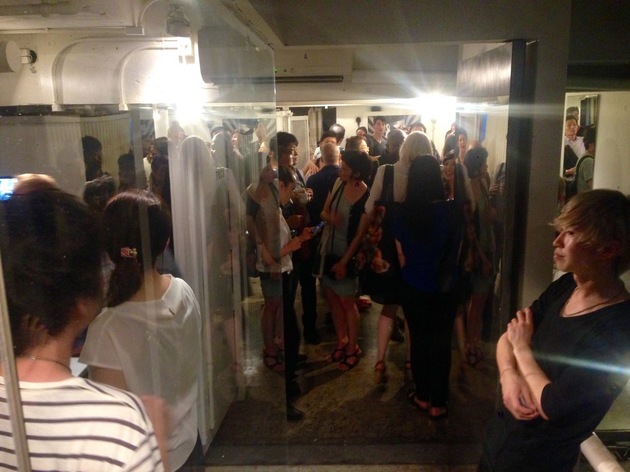
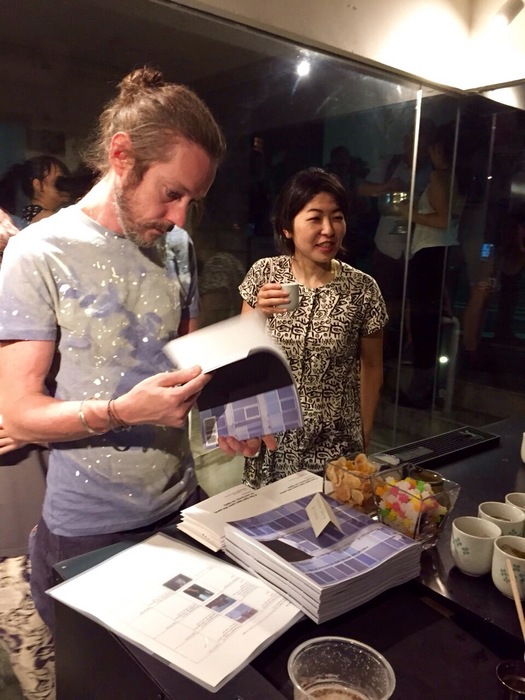
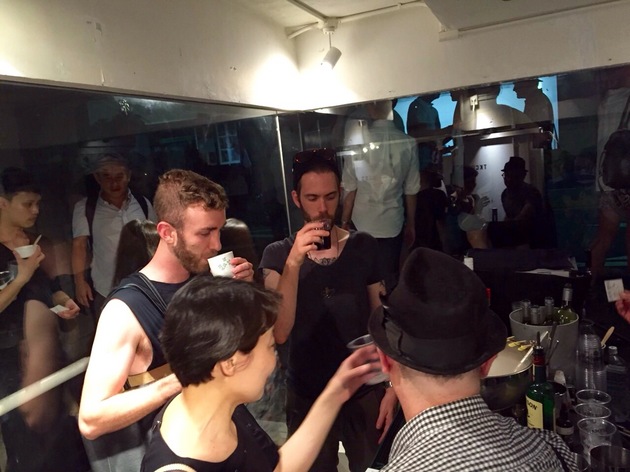


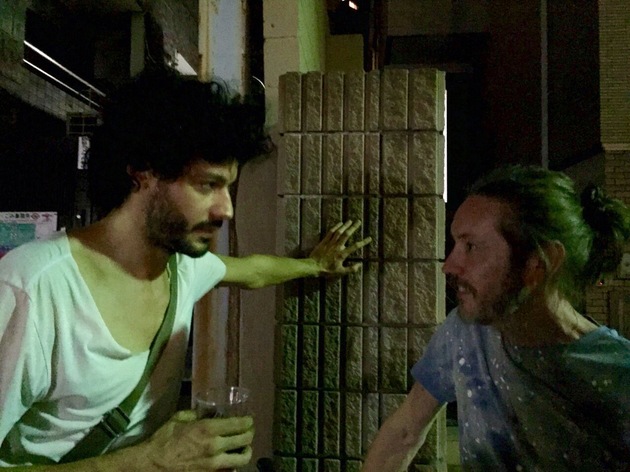
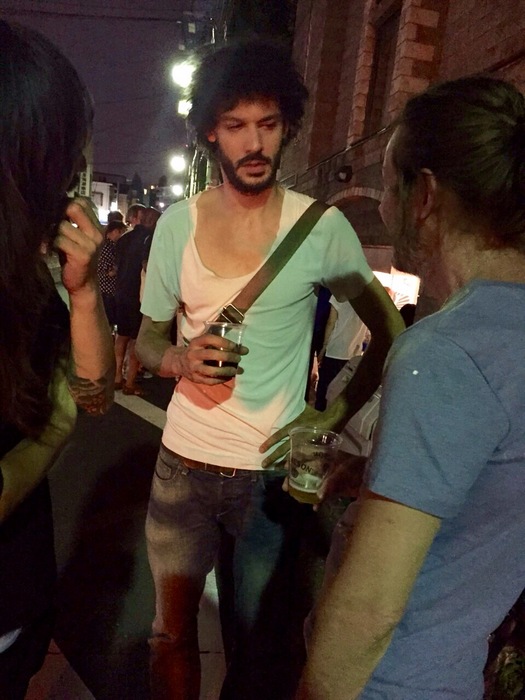
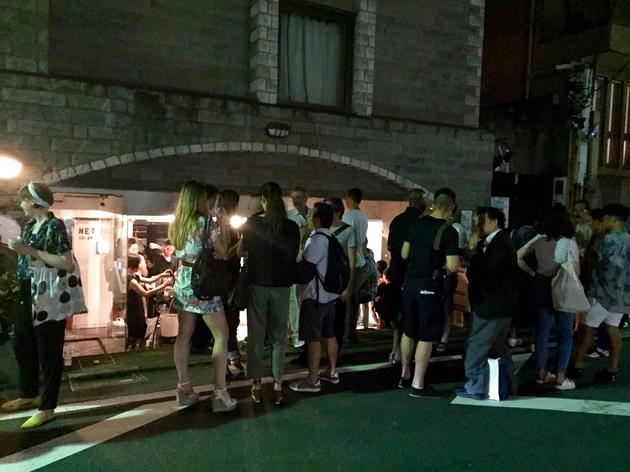
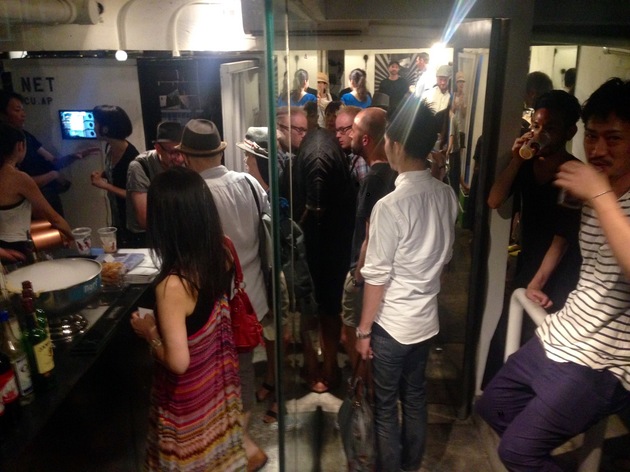
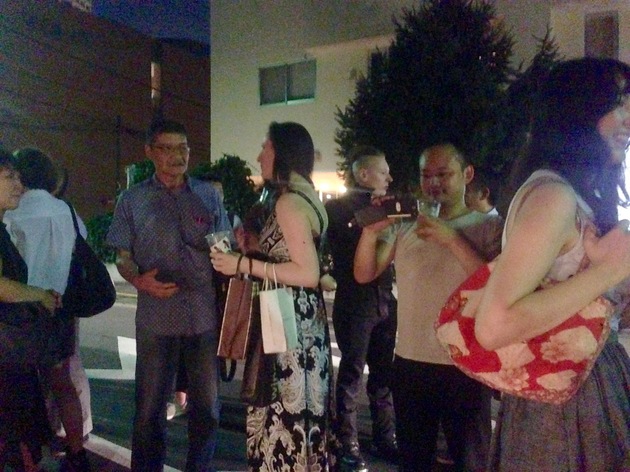
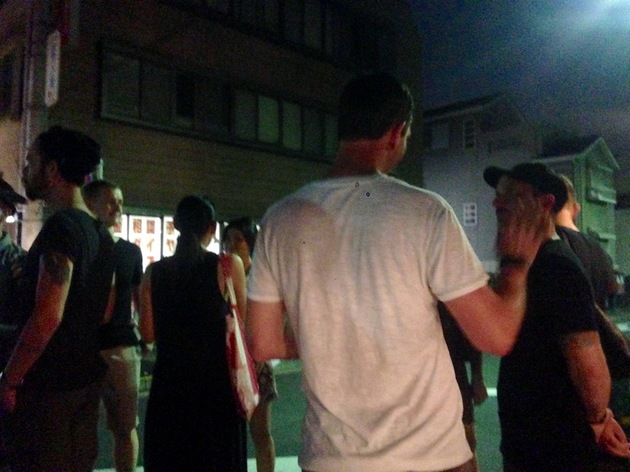

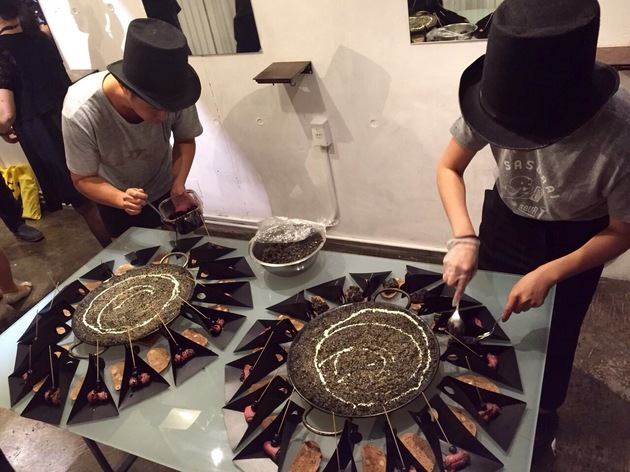

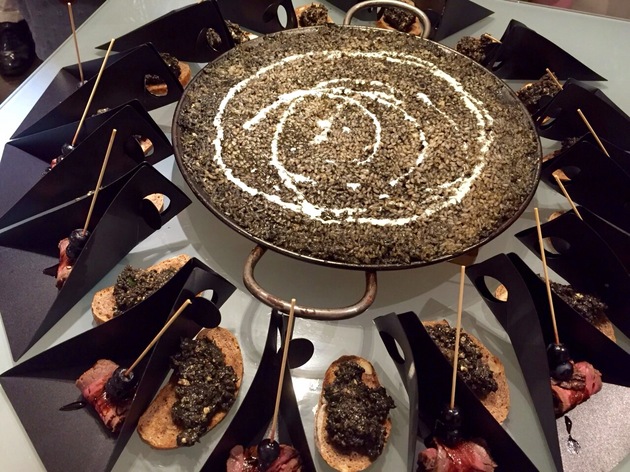

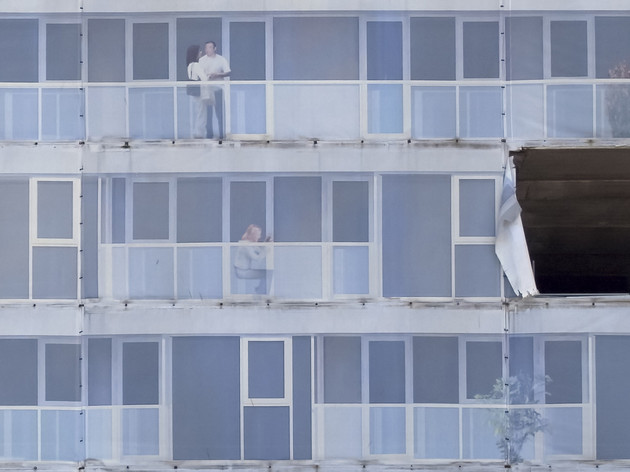
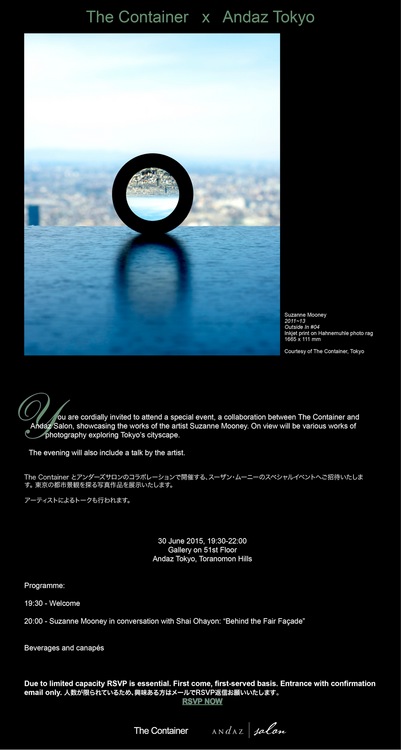
.jpg)
-c2f15.jpg)
-d6a81.jpg)

20E381AEE382B3E38394E383BC.jpg)
20E381AEE382B3E38394E383BC.jpg)
20E381AEE382B3E38394E383BC.jpg)


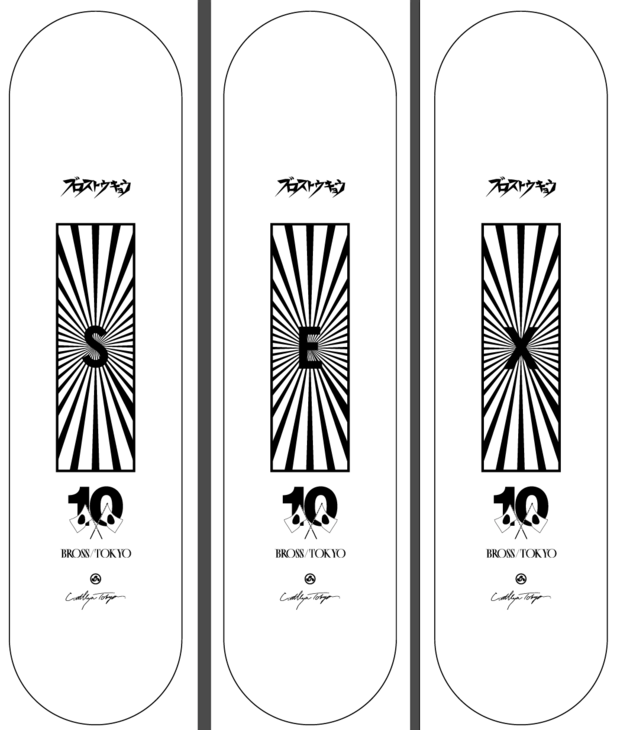
.jpg)
.jpg)
.jpg)
-e9647.jpg)
-a72d0.jpg)
.jpg)
.jpg)
.jpg)
-eaf09.jpg)
.jpg)
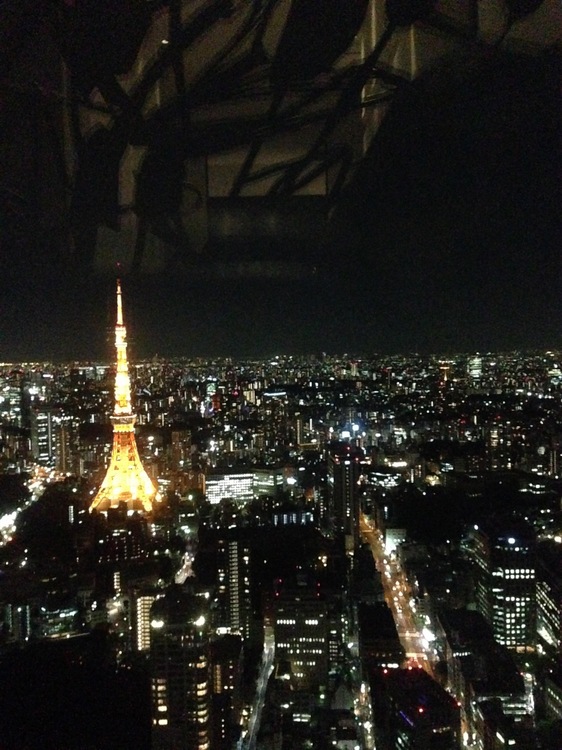
-a9325.jpg)
-09404.jpg)
-42635.jpg)



